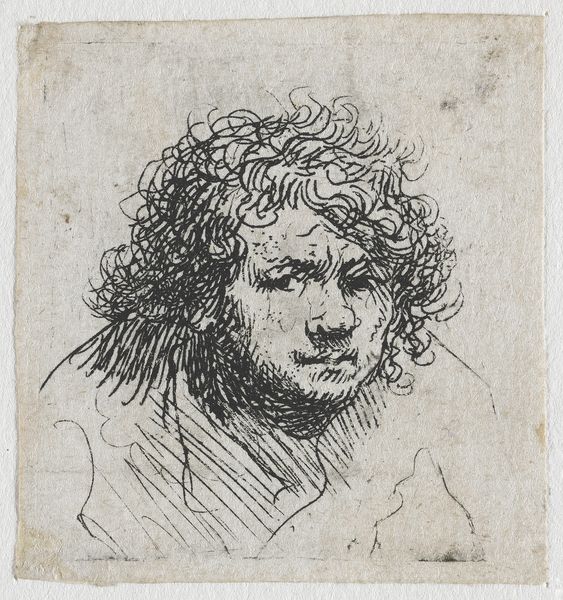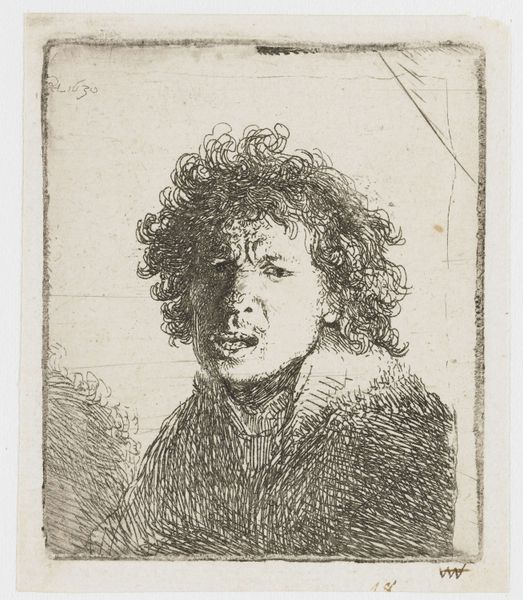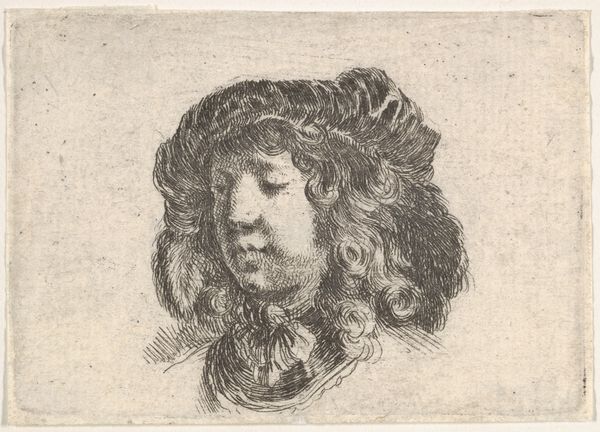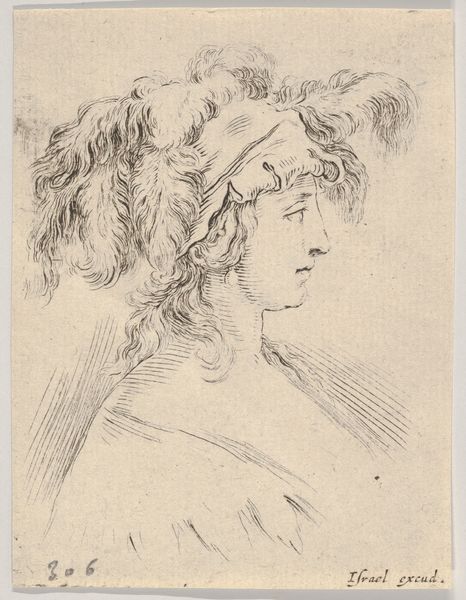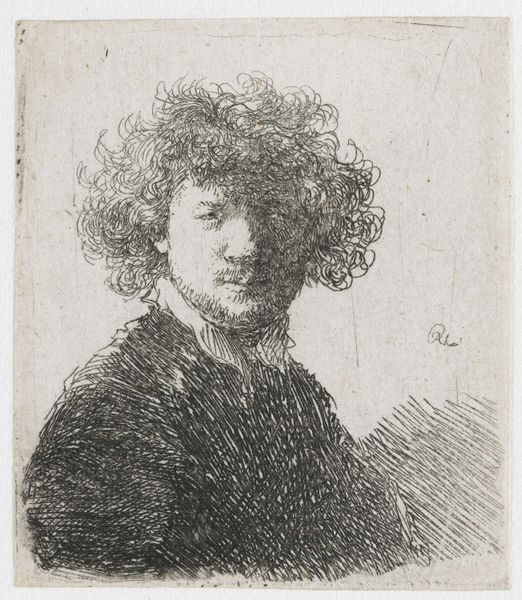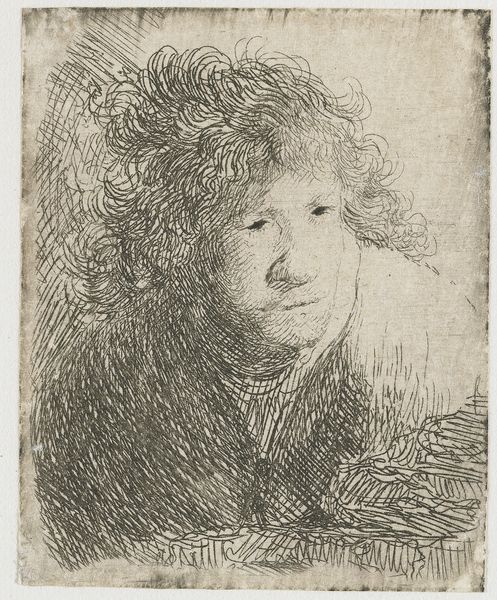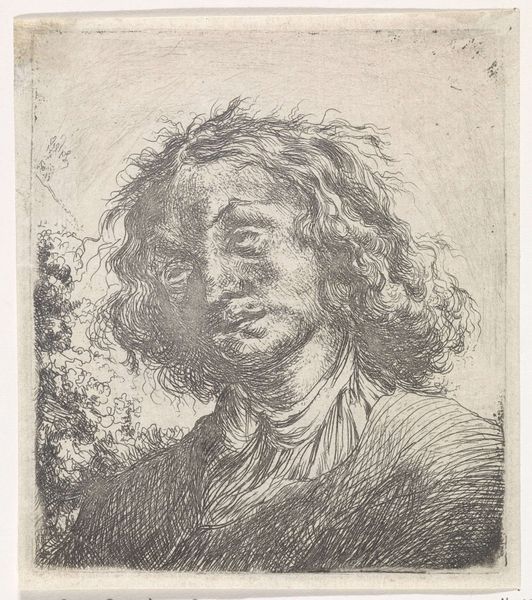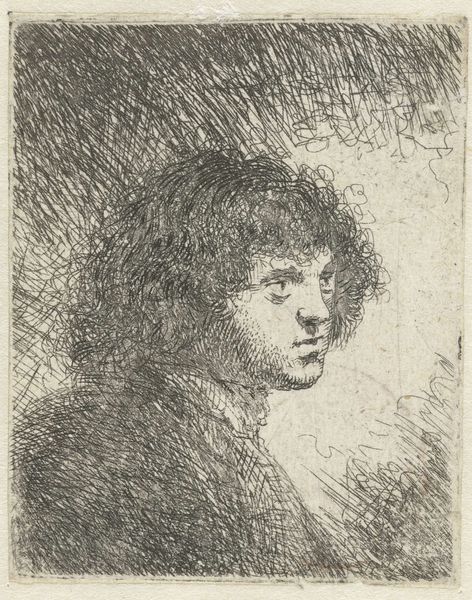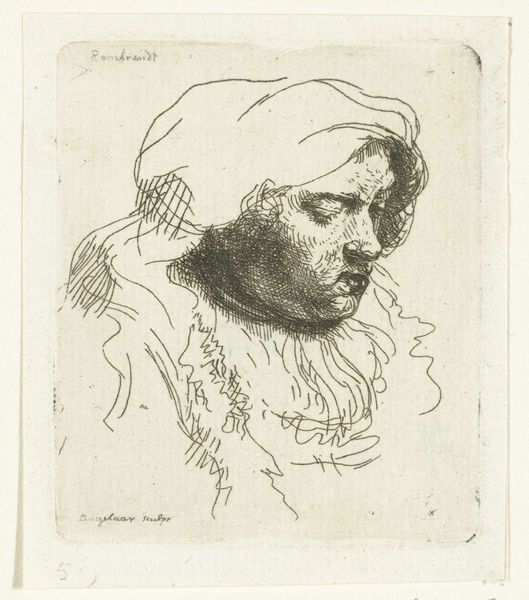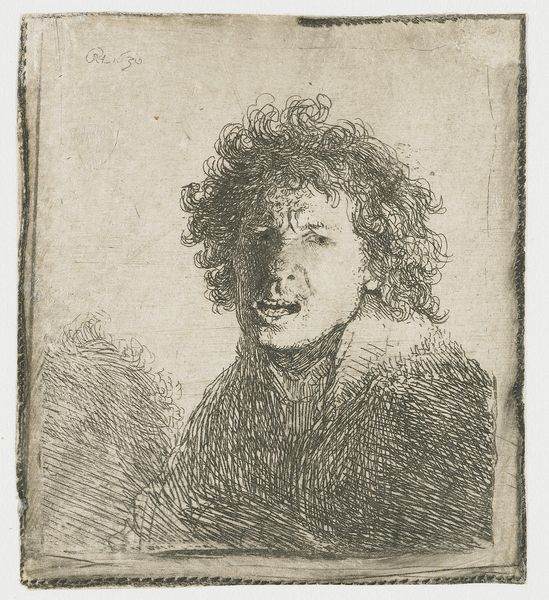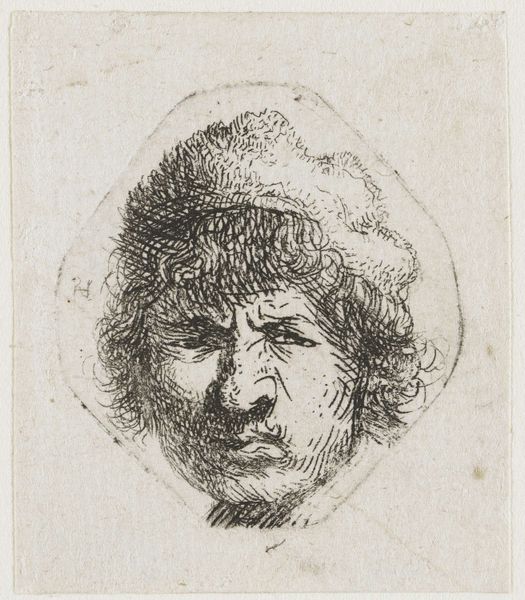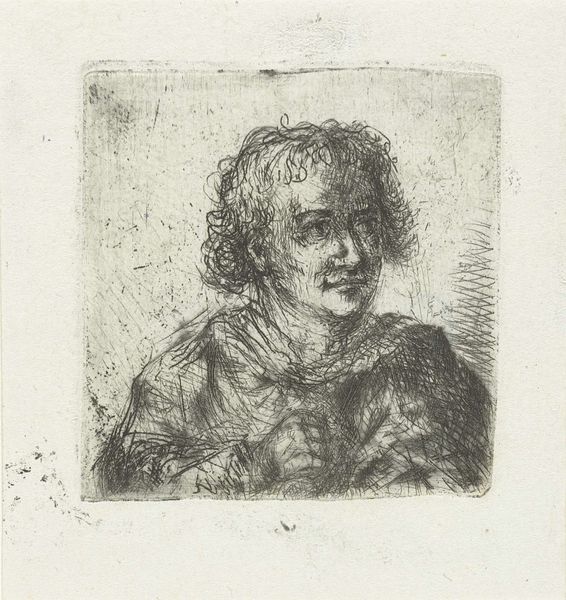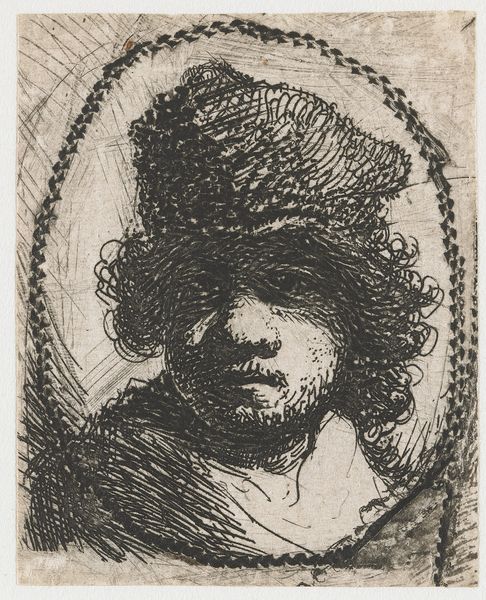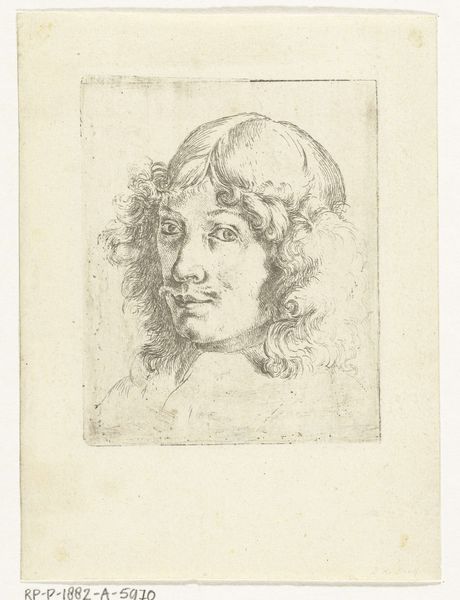
drawing, paper, ink
#
portrait
#
drawing
#
self-portrait
#
baroque
#
figuration
#
paper
#
ink
#
line
Dimensions: height 64 mm, width 50 mm
Copyright: Rijks Museum: Open Domain
Editor: We're looking at "Self-portrait, Leaning Forward," a drawing by Rembrandt van Rijn from around 1629. It's rendered in ink on paper. I'm struck by how immediate and almost rough it feels, especially the hatching across his chest. What stands out to you from a formal perspective? Curator: The interplay of light and shadow, rendered through varied line weights and densities, immediately captures my attention. Notice how the dense, almost chaotic, lines describing the hair contrast with the relatively smooth, albeit scratched, plane of the face. It's in this formal tension that the dynamism of the work resides. Editor: So you're focusing on the push and pull between textures? The energy of those lines in the hair does give it a sense of volume and almost a life of its own. Curator: Precisely. Consider the use of line itself: short, staccato marks coalesce to form shadow, while longer, more fluid lines delineate form. The absence of line, in certain areas, suggests the presence of light. Do you see how this strategic manipulation creates depth? Editor: Yes, now I see how the hatching creates volume and a directionality to the light. I initially saw it as just rough, but there’s real intent behind those marks. The way the light falls onto his face makes the angle more intense. Curator: The expressive potential of line is paramount. While representational, this is foremost a study in formal relationships. Look, the positioning draws your eye in a circular movement between each major element; his gaze, face, and the darker left side of the artwork, as it builds with shadow. Editor: I see what you mean about the relationships now. I was so focused on the initial impact that I overlooked the structure. Curator: The formal structure is not immediately visible but reveals itself upon close examination. Form dictates function. A useful thought regarding Rembrandt.
Comments
rijksmuseum about 2 years ago
⋮
Rembrandt must have had a substantial collection of headgear. Here we see him in a cap pulled forward, a kutchma (a Polish fur hat) and a velvet beret with a visor. Incidentally, in Rembrandt’s time such berets were considered old-fashioned and reminiscent mainly of 16th-century head coverings.
Join the conversation
Join millions of artists and users on Artera today and experience the ultimate creative platform.
